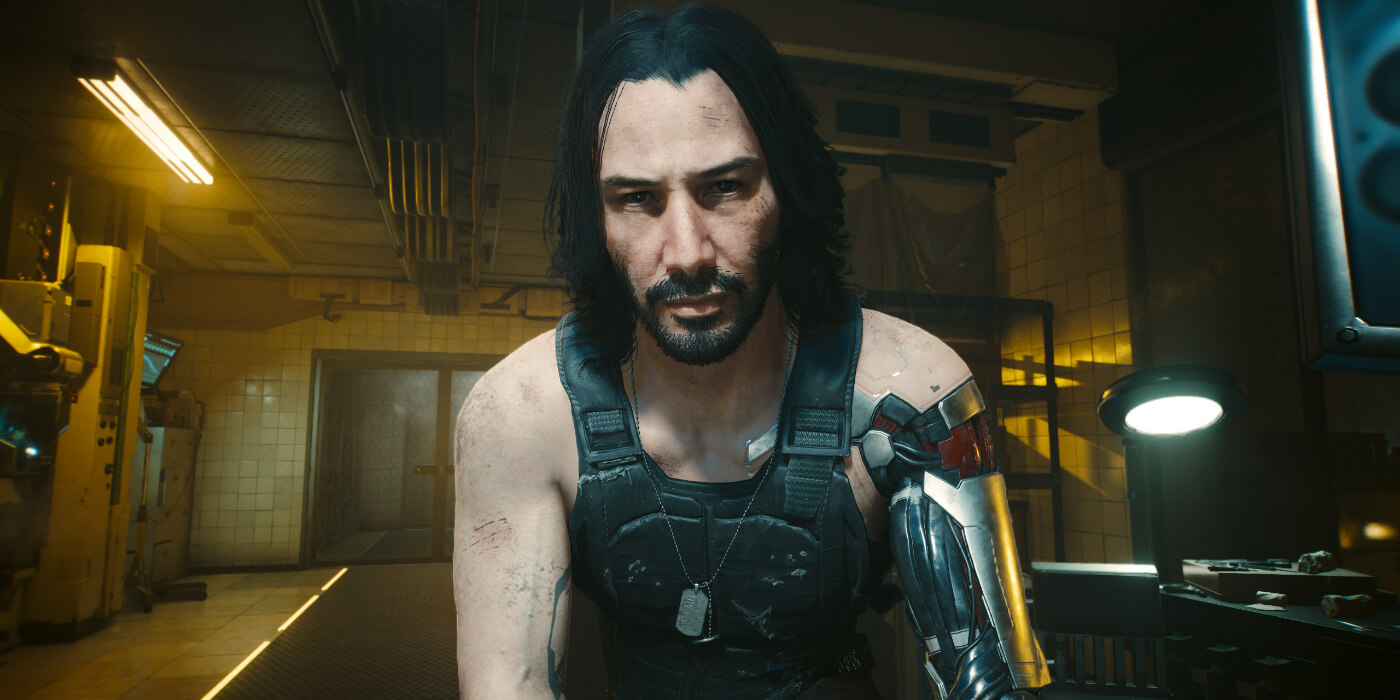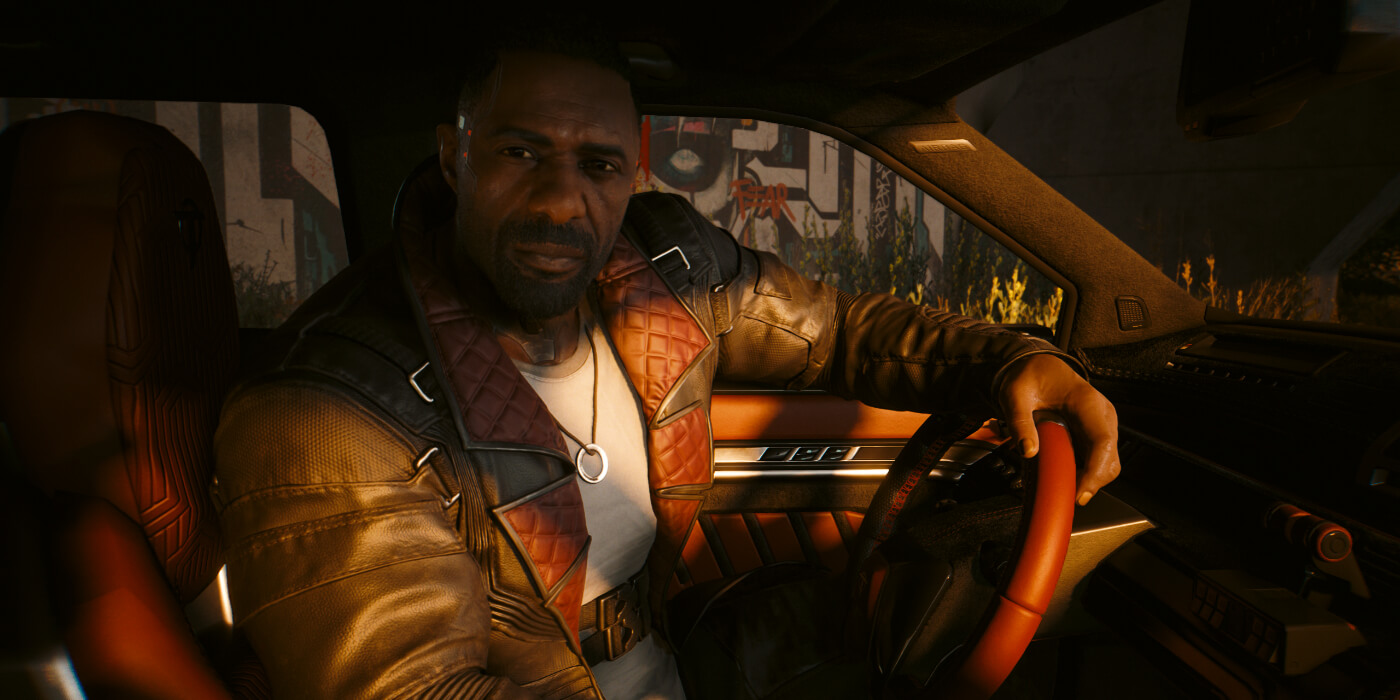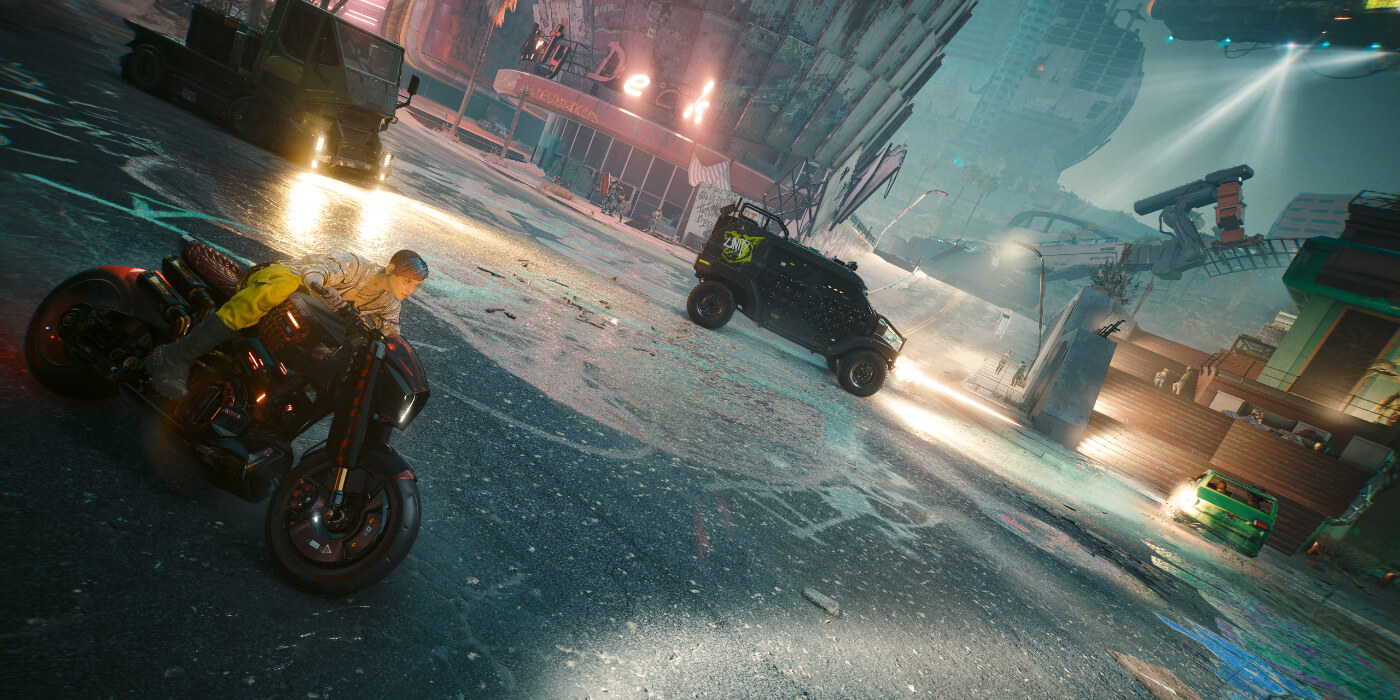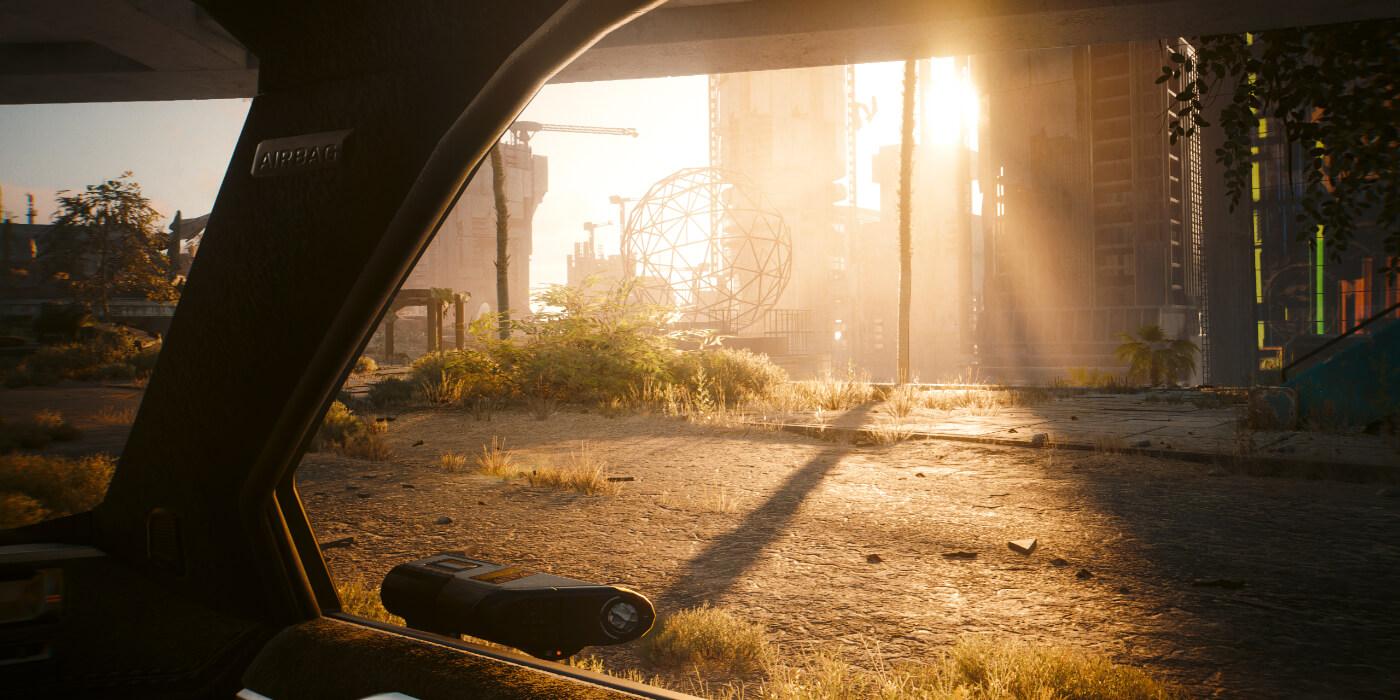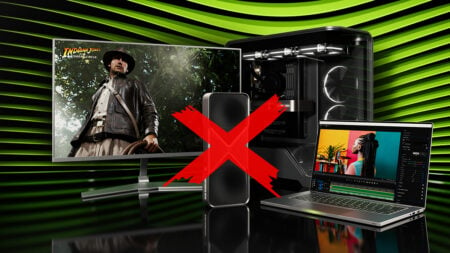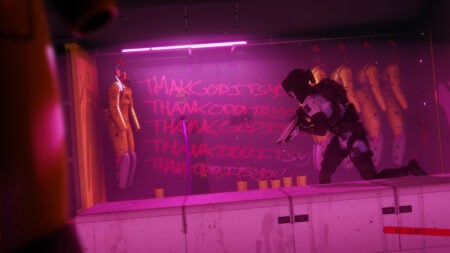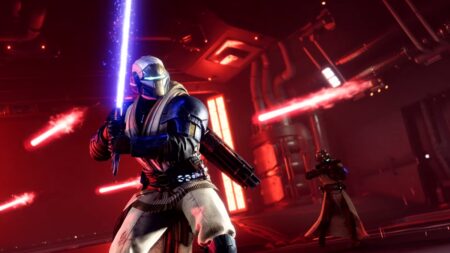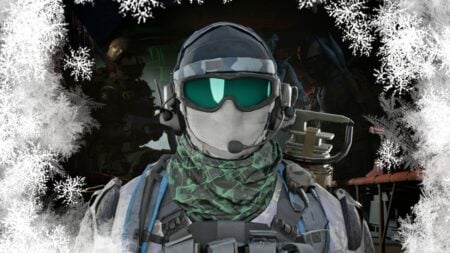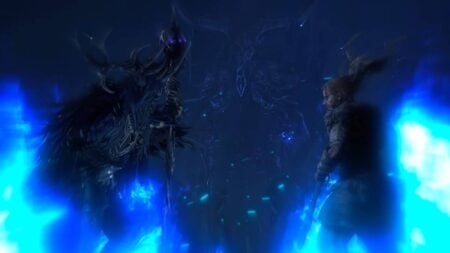Skip To...
Phantom Liberty is Cyberpunk 2077 after a visit to the ripperdoc. What was familiar has been torn apart and made new again. It’s beautiful and ugly all at once, but it’s stronger now and sleeker. CD Projekt Red understands a good redemption arc: it underwent one of its own. It began with fans’ impossible expectations and the game’s calamitous debut. It ends with a redemption tale worthy of V, culminating in the release of Phantom Liberty. Players who have always hated the game will not be swayed by its shiny new chrome and fresh wiring. Those who looked past its scarred exterior, however, will find this dystopian RPG at its finest.
Phantom Liberty Review: Fresh Chrome
Phantom Liberty introduces players to a new district of Night City: Dogtown. Controlled by a rogue NUSA colonel and his army of Barghest soldiers, Dogtown revitalizes Pacifica in exciting ways. Night City’s southern district isn’t the only thing getting an upgrade, however. This DLC does more than expand the map and add new quests, guns, and outfits. It pairs with Update 2.0 to rework the entire game, including a complete revision of perks and cyberware. Some of these changes right wrongs that have gone uncorrected since the game’s 2020 release. After grinding off some of Cyberpunk’s jaggedest edges, the result is an RPG enthusiast’s delight.
Story: A Songbird In Dogtown
Phantom Liberty begins with V in a familiar position: suffering the intrusive chattering of a voice in their head. Normally, the cranial invader chiming in with unwanted commentary is Johnny Silverhand, everyone’s favorite rockstar / corporate terrorist / cyberghost. This time, it’s a new voice: an enigmatic woman named Songbird. How this NUSA netrunner came to share headspace with Johnny is a spoiler. In fact, almost everything about Phantom Liberty’s plot is a spoiler. So, instead of talking about the story, this review will need to talk around it. Thankfully, CDPR’s game design makes that easy.
The main plot of Phantom Liberty is one of conspiracy and espionage. Ever since novels like Neuromancer and Count Zero first created the genre, cyberpunk has embraced stories of failed states, rogue corporations, and desperate citizens. CDPR’s writers know these stories down to the last silicon wafer, and it shows. Songbird guides V into Dogtown in the hopes that our intrepid antihero can help with a mission: save the president. That’s such an over-the-top premise that it would take a feat of literary wizardry to turn it into something gritty and emotional. Of course, this is CDPR, and that’s exactly what the developer gave us.
When a crash landing leaves NUSA President Rosalind Myers stranded in Dogtown, it’s blood in the water, and every shark around moves in to investigate. Chief among them is Kurt Hansen, leader of Dogtown and the Barghest faction. To no one’s surprise, V gets roped into the secrecy and bloodshed right away. Cyberpunk players are used to being a pawn of the powers that be. From Johnny Silverhand and Jackie Welles to Mr. Hands and the FIA, people always want something from our hero. It’s no different in Phantom Liberty. The DLC not only introduces players to a new district but also reveals surprising things about characters we thought we knew.
Keanu Reeves reprises his role as Johnny Silverhand, as jaded, aggravating, and wonderful a character as ever. Joining him is Solomon Reed, an FIA agent played by the incomparable Idris Elba. CDPR uses Elba’s talents perfectly. In a game flush with fascinating characters, Reed ends up being one of the most interesting of all. Elba brings gruff charm and sincerity to a role that could’ve been paper thin. Learning more about Reed and the shadowy players in his life is a pleasure. Outstanding dialog and performances sell the story at every turn, leaving players eager for more.
Phantom Liberty is dense. The conspiracies are multi-layered, everyone has an agenda, and it takes time for the pieces to come together. The writing is rarely predictable, and even when a plot point telegraphs itself, the ride is so fun that the few bumps barely register. The plot of Phantom Liberty is arguably the strongest piece of storytelling in Cyberpunk. I adored the story and characters of the base game, and I somehow love these new additions even more. Even Dogtown feels like a character with a distinct personality that’s worth getting to know.
The story is divided into main missions, side gigs, and other smaller chunks of plot. For the most part, missions are impeccably paced. Don’t let the “spy thriller” moniker fool you into thinking Phantom Liberty is a slow-burning mystery. Its conspiracy-laden plot is unpacked one gunfight and tense confrontation at a time. The handful of relaxed moments chiefly serve to rebuild players’ taut nerves so that the next blow can be felt more keenly. Mission rewards vary, but the quality of the writing is so high that seeing more of the narrative is frequently the best payoff.
Gameplay: A Cut Above the Rest
CDPR has revised so many of the base game’s systems that the 2.0 designation is more than justified. The first and most impactful change is to perks. Every skill tree has gotten an overhaul, and the changes are universally good. Phantom Liberty even adds a new tree: Relic. The old skill trees were uninspiring. The new ones mostly ditch boring percentage buffs in favor of unique mechanics. Forget +5% health regen; now you can air dash. Combine that perk with double jump cyberware and a katana, and Phantom Liberty becomes a ninja parkour simulator.
Theorycrafting feels much better now that skill trees aren’t dragged down by boring options. Double jump + air dash + bullet time + katana = a gory ballet of Japanese steel. Ping-ponging around a room, landing just long enough to execute a gory finisher, and leaping away again feels spectacular. Mastering the mechanics behind these perk combos will take some time, but the results are worth it. Combat in Phantom Liberty manages to be both messier and more artful than it was. Which way it leans depends on your build and playstyle. Either way, it’s the most fun that combat in Cyberpunk 2077 has ever been.
The police system also received an overhaul. Before Phantom Liberty, poor spawn logic allowed the police to appear right beside your character in immersion-breaking ways. Getting away with certain crimes undetected proved impossible. Police chases? Non-existent. Phantom Liberty fixes all of that. Now cops respond, chase, and escalate appropriately (at least by Night City standards). From ordinary cruisers to MaxTac bruisers, law enforcement is finally the reactive threat it needs to be for this crime game to feel authentic.
Vehicular combat is now a thing. V can shoot from the driver’s seat or channel Kill Bill with a sword on a motorcycle. Some vehicles even come outfitted with mounted weapons. It all looks and feels the way you’d expect. Nothing here is revolutionary, and if you don’t enjoy how vehicles handle in Cyberpunk, vehicular combat won’t win you over. Still, it’s a nice change of pace and a mechanic that was sorely lacking in earlier versions. Blowing an enemy’s tire to escape pursuit feels great, and the flow of action is better with these changes.
Cyberware and armor have also received much-needed love. Gone are the days of wearing hideous outfits in the name of better defense. Armor now links to your cyberware instead of your clothing. Now, you can survive a bullet even in shorts or a cocktail dress. “Punk” is half the title, after all, so being free to wear whatever you want to a fight is a no-brainer. As for cyberware, V now has a limit on how much they can install. The allowable amount increases as the character levels up, and I never felt limited in my choices. These changes also help differentiate tech builds from other character types. Overall, it’s a serious improvement.
Bugs have been Cyberpunk 2077’s boogieman since it released, and Phantom Liberty has its share, though nowhere near the amount the game once did. Yes, there are still occasionally NPCs who float, teleport, or turn invisible. That said, I experienced zero crashes or stability issues during my time with the DLC. Though minor glitches still compromise immersion now and then, CDPR has eradicated the major issues that once plagued the game, at least in my experience. Given how detrimental bugs once were, it’s a point worth highlighting, even if some of them still linger.
Graphics & Audio: Sounds Like Mayhem
A disheveled man waves a metal detector over a patch of sand on the shoulder of a Dogtown road. He’s listening for the occasional metallic chirp that signals treasure. As he stoops to look at something, gunshots ring out a block away. He doesn’t flinch. Between the gangs, Barghest, and amoral mercs, gunshots are the closest thing Dogtown has to a lullaby. There are moments when the graphics and audio in Phantom Liberty make the whole thing eerily real.
This isn’t a main story mission or even a gig. It’s just one tiny moment in a DLC full of them. Even Cyberpunk 2077’s staunchest critics rarely condemn its graphics and audio. Dogtown has a distinct aesthetic — fusing construction sites and shanty towns with high rises and nightclubs — but its visuals are exactly what fans have come to expect. From multi-story, holographic billboards to the scrolling adverts on soda machines, Phantom Liberty is an endless tapestry of sights and sounds. I never experienced stuttering or related issues, even on the highest graphics settings, so whatever CDPR is doing, they’re doing it right.
Phantom Liberty sails over the high bar set by the base game. The developer has gone above and beyond with the designs of weapons, cars, and clothes. Pay attention to detail, and you can tell a gun’s manufacturer from look and feel alone. That’s a testament to the quality of CDPR’s worldbuilding as much as the DLC’s graphics and audio departments. Given how big a deal fashion is in Cyberpunk 2077, a review can’t go without mentioning clothes. Thanks to the inclusion of transmog, players can flex their best fit without screwing up their armor rating, and Phantom Liberty gives players more enticing fashion options than ever.
The soundtrack and ambient noises are everything you’d expect. Whether you’re buying ramen from a street vendor or shooting a robot in the face with an electrified shotgun, you can bet the soundtrack will match. From merchants and gangsters to priests and celebrities, Dogtown overflows with NPCS, many of them lovingly voiced. You can’t walk through a busy market or club without hearing snatches of conversation from half a dozen random NPCs. When the suspension of disbelief isn’t undercut by glitches, Cyberpunk 2077: Phantom Liberty is unfailingly immersive.
Conclusion: Cyberpunk Redeemed
Phantom Liberty is incredibly well-made, but it’s also DLC for a game with significant problems, some of which are still not fixed. Because this DLC accompanies a 2.0 revision of Cyberpunk, its rating must take into account whatever problems the base game still suffers. That said, Phantom Liberty brings the game closer to punk perfection than it’s ever been. It’s a gritty love letter to the original as well as the novels that kickstarted the genre. In the face of impossible expectations, CD Projekt Red produced a DLC that almost met them.
Whether you’re a roleplayer, action fan, or lore aficionado, there’s something in Phantom Liberty that will blow you away. Arguably, the two stars of the show are the skill system overhaul and story. Fighting enemies and exploring Dogtown feel wonderful. If Cyberpunk didn’t already rank amongst the best open-world RPGs, it does now. It’s just unfortunate that bugs and some underwhelming mechanics detract from what is otherwise a monumental accomplishment. Some players won’t look past these flaws, which is a shame because the game is incredibly fun and only gets better with time. Thanks to Phantom Liberty, Cyberpunk 2077 is finally the game that fans deserve.
Cyberpunk 2077: Phantom Liberty will be available for PC, PlayStation 5, and
*Review copy provided by the publisher; title reviewed on PC.*
Cyberpunk 2077: Phantom Liberty (PC Reviewed)
A dystopian RPG with a dark story as gripping as its over-the-top combat and characters.
Pros
- Phenomenal main story and side quests
- Top-tier combat
- Excellent build variety
Cons
- Persistent bugs
- Underwhelming vehicle combat


